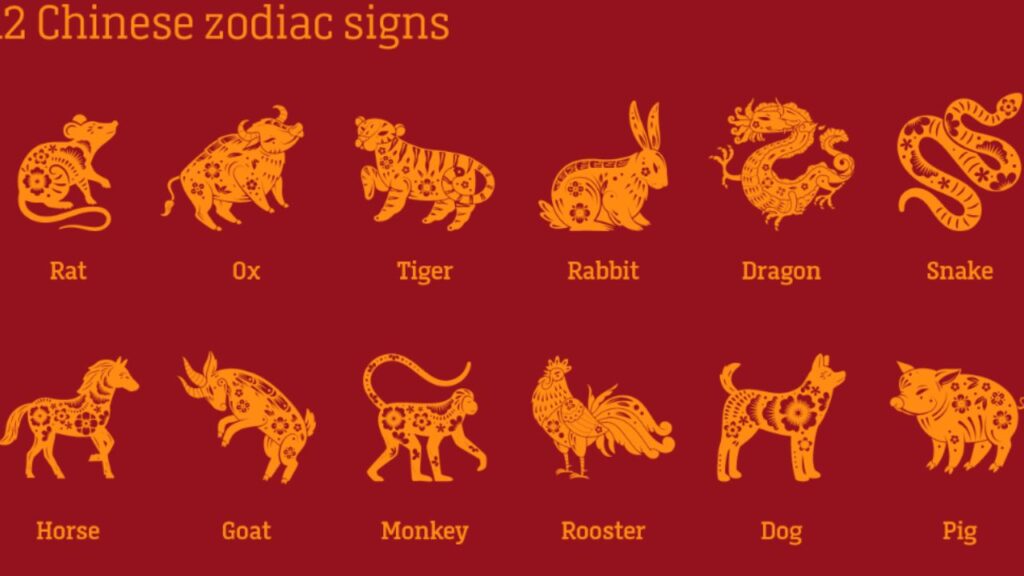At this very moment, millions of people around the world are busy preparing for one of the year’s biggest festivals – Lunar New Year, which marks the first new moon of the lunar calendar.
This year, it falls on February 10, kicking off the 15-day Spring Festival.
Whether you’re unfamiliar with Lunar New Year or need a refresher, this guide will highlight some of the most common traditions associated with the occasion.
Why is it the Year of the Dragon?
Though incredibly complex, the Chinese zodiac calendar is best described as a 12-year cycle represented by 12 different animals, in this order: Rat, Ox, Tiger, Rabbit, Dragon, Snake, Horse, Goat, Monkey, Rooster, Dog and Pig.
Your personal zodiac animal sign is determined by your year of birth, meaning 2024 will welcome plenty of baby dragons to the world. Those born in 2025 will be snakes, and so on.

Followers believe that for each Chinese zodiac sign, luck will depend largely on the positions of the Tai Sui – a collective name for the stellar deities thought to rotate parallel to and in the opposite direction of Jupiter.
Different geomancy masters may interpret the data differently, but there is usually a consensus on what the year means for each zodiac animal based on the positions of the stars.
Why light firecrackers and wear red? Meet Nian
There are countless folk tales attached to Lunar New Year, but the myth of “Nian” stands out as one of the most fun.
Legend has it Nian was a ferocious underwater beast with sharp teeth and horns. Every Lunar New Year’s Eve, it crawled onto the land and attacked a nearby village.
On one such occasion, as the villagers rushed into hiding, a mysterious old man showed up and insisted on sticking around despite being warned of impending doom.
To the villagers’ surprise, the old man and the village survived utterly unscathed.
The man claimed to have scared Nian away by hanging red banners on the door, lighting firecrackers and donning red clothing.
This is why wearing the fiery color, along with hanging red banners and lighting firecrackers or fireworks, are Lunar New Year traditions, all of which are still followed today.
The preparation
Fun aside, Lunar New Year can actually be a lot of work. Festivities often last for 15 days – sometimes even more – with different tasks and activities taking place over that period.
It all begins about a week ahead of the new year.
Festive cakes and puddings are made on the 24th day of the last lunar month (February 3 in 2024). Why? The word for cakes and puddings is “gao” in Mandarin and “gou” in Cantonese, which sound the same as the word for “tall.”
As a result, eating these treats is believed to lead to improvements and growth in the coming year. (If you haven’t prepared your own “gou” yet, here’s an easy recipe for turnip cake, a beloved Lunar New Year dish.)
And don’t forget about our friend Nian. No Lunar New Year preparation would be complete without the aforementioned hanging of red banners bearing auspicious phrases and idioms (called fai chun in Cantonese, or chunlian, in Mandarin) at home – beginning with one’s front door.
These will perform double duty – keep Nian away and invite good fortune.
The aim is to rid your home of any bad luck that’s accumulated over the past year.
And don’t clean anything again till February 12, or you’re washing away all that good luck that came in at the start of the new year.
On a related note, some say you shouldn’t wash or cut your hair on the first day of the new year either.
Why? The Chinese character for hair is the first character in the word for prosper. Therefore washing or cutting it off is seen as washing your fortune away.
You’ll also want to avoid purchasing footwear for the entire lunar month, as the term for shoes (haai) sounds like losing and sighing in Cantonese.
Lunar New Year’s Eve: The big feast
A big family reunion dinner is usually held on Lunar New Year’s Eve, which falls on February 9 this year.
The menu is carefully chosen to include dishes associated with luck, including fish (the Chinese word for it also sounds like “surplus”), puddings (symbolizes advancement) and foods that look like gold ingots (like dumplings).

In China, the foods served at these classic dinners vary from north to south. For instance, northern Chinese tend to have dumplings and noodles, whereas southern Chinese can’t live without steamed rice.
But no matter which dishes you prefer, Lunar New Year foods are a feast of wordplay.
Lunar New Year’s Day: Family visits and red packets
The first few days of the Lunar New Year, especially the first two days, are often a test of one’s stamina, appetite and social skills, as many people have to travel and visit immediate family, other relatives and friends.
Bags are stocked with presents and fruits to give out at homes visited. Visitors will in turn be showered with gifts after exchanging conversations over Lunar New Year treats.
Married people also have to give out red packets to those who haven’t yet tied the knot – both children and unmarried juniors.

Day 3: Visit a temple
Day three of the Lunar New Year (which falls on February 12 in 2024) is named “chi kou/cek hau,” or red mouth.
It’s believed that arguments are more likely to happen on this day, so people will avoid social interactions and instead visit temples.
While there, some will use the opportunity to make offerings to offset any potential bad luck. As noted earlier, for many people Lunar New Year is a time to consult the stars to find out what lies ahead in the coming months.
Every year, certain Chinese zodiac signs clash with the stars negatively so temple visits are considered a good way to resolve those conflicts and bring peace in the coming months.
Day 7: The people’s birthday
The seventh day of the Lunar New Year (February 16 in 2024) is said to be when the Chinese mother goddess, Nuwa, created humanity. Thus, it’s called renri/jan jat (the people’s birthday).

For instance, people in Malaysia enjoy yeesang, or a “Prosperity Toss” of raw fish and shredded vegetables, whereas Cantonese people eat sweet rice balls.
The highlight of the whole Spring Festival, the Lantern Festival happens on the 15th and final day (February 24 in 2024).
Called Yuan Xiao Jie in Mandarin Chinese, it’s considered the perfect ending to the weeks-long Lunar New Year preparations and celebrations.
The Lantern Festival celebrates the first full moon of the year – hence the name (Yuan means beginning. Xiao means night).
It marks the departure of winter and the beginning of the spring season.
On this day, people light lanterns to symbolize driving out darkness and bringing hope to the coming year.
In ancient Chinese society, it was the only day when young girls were allowed to go out to admire the lanterns and meet boys. As a result, it’s also been dubbed Chinese Valentine’s Day.
Nowadays, cities worldwide still put on massive lantern displays and fairs on the festival’s final day. Some Chinese cities, such as Chengdu, even host dramatic fire dragon dances.




